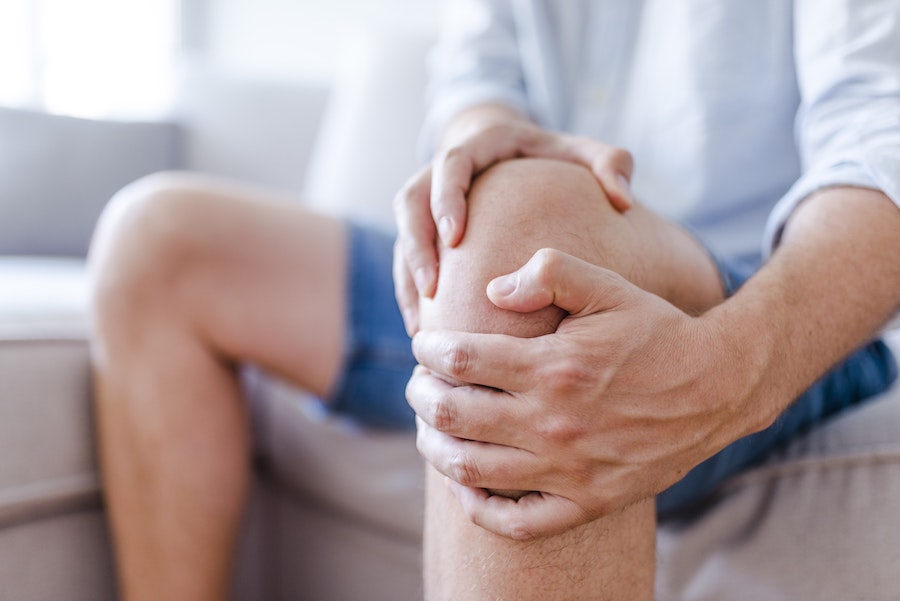4 ways to get some much-needed relief from joint pain – without resorting to painkillers
Joint pain can be irritating at best and crippling at worse, and it’s certainly no fun to deal with in the summer heat.
As one of the major health complaints here in the UK, more than 10 million people suffer with arthritis or other conditions that affect the joints, causing aches, pains and plenty of discomfort.
“Joint pain affects individuals all year round, despite the common myth that it becomes worse in winter,” says LloydsPharmacy pharmacist Anshu Kaura (lloydspharmacy.com).
you know what would be great?
just, not feeling exhaustion and pain in my bones and joints
— throw me! throw me into the sun! (@criptacular) July 7, 2019
“It can affect both your emotional and physical wellbeing, often causing a lack of mobility – however, there are ways in which you can help improve your movement, with lifestyle changes and solutions to support and protect the joints.”
Here, Kaura recommends her top drug-free alternatives to help manage joint pain when all you want to do is get outside and enjoy the good weather…
1. Take a hike
It might sound counter-intuitive, but a bit of light exercise may help to relieve some of the annoying symptoms of joint troubles.
“Walking is a great way to get physically active and enjoy the warm weather during the summer,” says Kaura, “and it can also help to increase muscle strength, particularly in the lower body.”
To reap the benefits of exercise without putting you at risk of injury, Kaura suggests trying Nordic walking. This type of low-impact fitness involves using specially designed walking poles to help propel you forward as you walk, which takes the pressure off the knees and joints.
View this post on InstagramWalking with Nordic walking sticks is great #nordicwalking #holidayweekend
“Nordic walking has been shown to be particularly effective in helping those with balance or joint conditions,” notes Kaura. “Plus, the poles absorb some of the ground impact, reducing any negative bearing on the knees.”
Check out your local area to see if there are any walking groups you can join, as exercising in a group can keep you motivated to attend week after week.
2. Try drug-free pain relief
If you feel a sore knee flaring up, it’s tempting to raid the medicine cabinet for some respite. However, Kaura recommends seeking out more gentle methods before resorting to the strong stuff.
“You shouldn’t have to always turn to painkillers to provide relief, and it’s important to remember that whilst painkillers may alleviate the pain, they won’t necessarily enhance your movement or help protect your joints,” she warns.
“Topical gels can be very effective at alleviating the pain, and the active ingredients can even help your joints move more freely,” she says.
Every tube of Flexiseq is packed with billions of tiny, oily droplets called Sequessomes™
How can they help easing the pain and stiffness of #osteoarthritis?
Step this way… https://t.co/tX96p3VTmL pic.twitter.com/EscR6QxtHd
— FLEXISEQ (@FLEXISEQ) June 24, 2019
“You could try something like Flexiseq Gel (£18.49 for 50g, lloydspharmacy.com) for drug-free, targeted care for joint wear and tear.
“Topically applied to joints, it delivers deep, penetrating lubricants, helping to support joint health.”
3. Go Mediterranean
“Leading a healthy diet and trying to lose a little weight through light exercise may pay dividends in reducing your joint pain and increasing your ability to stay active,” says Kaura.
“There’s a strong link between diet and joint pain; both in maintaining a healthy weight and obtaining beneficial nutrients,” she explains, adding that excess fat around the joints can put strain on the body and can sometimes increase inflammation.
View this post on InstagramLunch! #mediterraneandiet #carbcycling #weightloss #summerbody #diet #tomato #goatscheese
Kaura says that studies have found that diets rich in fruit and vegetables, such as the Mediterranean diet, have a number of health benefits, including improved mobility in the lower body and less arthritis-led pain.
“Mediterranean diets are typically high in omega-3 fats found in oily fish, which have anti-inflammatory properties that can help ease symptoms,” she notes.
“Vitamin K is another nutrient shown to support the bone cartilage to reduce symptoms of joint pain. Good sources are typically found in leafy vegetables and cereals.”
4. Make a splash
Is there anything more refreshing than going for a swim on a hot summer’s day? As well as helping you to cool off, it could help to support your joints in the long-run.
“Swimming has many benefits on the body, particularly if you experience joint-pain on your knees,” says Kaura.
Essentially, the water supports your body, allowing you to float, meaning that there’s less impact on the skeletal system, including your joints.
“Gentle swimming or water aerobics can help strengthen your muscles around your joints, reducing the impact of pain,” adds Kaura.
“Not only is swimming a pain-free way to keep moving, but strengthening your muscles can help reduce the degenerative impact of joint pain.
She says: “Warm pools are particularly beneficial, as the heat can help to loosen stiff joints, supporting flexibility.
“Beyond supporting the joints, swimming offers a number of other health benefits, including improved circulation and breathing, lower heart rates and healthier blood pressure.”
The Press Association
Latest posts by The Press Association (see all)
- The best ways to boost your immune system as cold temperatures hit - January 5, 2025
- The Osmonds star and ‘beloved husband and father’ Wayne Osmond dies aged 73 - January 2, 2025
- What screenings are available on the NHS to detect cancer early? - January 2, 2025
- Help your grandchildren make the most of Big Schools’ Birdwatch - January 1, 2025
- Veteran radio star Johnnie Walker dies aged 79 - December 31, 2024




















